Seven is a significant number, for reasons that have nothing to do with luck. It has been said that the human brain is not equipped to deal directly with numbers larger than five; but that appears to be more a fault of the human visual cortex, which needs to mentally divide larger collections of objects into smaller groups in order to count them. Other regions of the brain cope very well with larger groups, and groups of seven are an especial favourite. In particular, the people who study group dynamics have found that the ideal size of a working group is seven people. Fewer people in a group give you, of course, fewer hands to do the work, but also can limit the group’s ability to incorporate all the various skills needed for a job. With more than seven members, the group begins to become unwieldy, as people have insufficient opportunities to deal with one another face to face and get to know each other’s needs and capacities.
Film and television writers know this as if by instinct. The most memorable shows tend to have regular casts, not necessarily of seven, but at any rate of six to eight, close to the sweet spot of group dynamics, so that viewers can feel familiar with each character, yet also find them to have an interesting variety. This is why, when Sherwood Schwartz created Gilligan’s Island, he put exactly seven people aboard the S. S. Minnow. It is also why there are Seven Samurai in one film, and a Magnificent Seven in another. And it explains why, of the two most famous works of fantasy to debut in 1937 (both still beloved today), the Seven Dwarfs in Snow White are much more memorable characters than the rather faceless and interchangeable thirteen Dwarves in The Hobbit. Thorin, Balin, and Bombur are about the only ones who stand out in the reader’s memory; the others have little to do beyond making up the unlucky number for Mr. Baggins to make lucky again.
Of course we have seven Deadly Sins, seven Cardinal Virtues, seven Wonders of the World, seven (named) continents, and other useful sets of the same size. Mnemonics like ‘Roy G. Biv’, for the seven supposed colours of the rainbow, and ‘Oh Be A Fine Girl, Kiss Me’ for the seven principal spectral types of stars, often work best with seven members in the list. (XKCD once made a joke: ‘I have this problem where all sets of seven things are indistinguishable to me.’ He therefore listed the Seven Dwarfs as Sneezy, Phylum, Europe, Sloth, Guacamole, Data Link, and Colossus of Rhodes.)
For this reason, if you want to break a large task down into components so that they are easy to remember in the correct order, it is advantageous to have no more than seven parts. That is what the authors of the Open Systems Interconnection (OSI) networking model did, and what I propose to do with the mental process by which writers create stories and readers or viewers receive them. The OSI model takes the task of sending data across a computer network and divides it into seven sub-tasks or ‘layers’, each with its own clearly defined function. I list them in reverse numerical order, with the most abstract layer at the top and the nuts and bolts at the bottom:
7. Application.
6. Presentation.
5. Session.
4. Transport.
3. Network.
2. Data Link.
1. Physical.
The human user of the network looks down from the top, and only has to deal directly with level 7; the physical wires and wireless equipment that make up the hardware of the Internet look up from the bottom. The elegance of the system is the power to ‘swap out’ any one layer and replace it with a different implementation, provided that it follows the rules for communicating with the layers above and below it. For a program on layer 6 (Presentation), it does not matter if the web browser on level 7 runs on Windows, Mac, iOS, or Android. For a device on layer 2 (Data Link), it does not matter if the physical connection on layer 1 works by wires, radio, or (in theory) smoke signals or carrier pigeons – though the latter two methods will be painfully slow for the humans involved!
(For those of you who are unfamiliar with the OSI model, I direct you to this short digression. I’ll wait here until you get back.)
In a similar fashion, we can break the process of telling and understanding stories into seven layers, with the conscious mind of the author or audience looking down from the top, and the physical medium of the story at the bottom. All the layers except the bottom one are tasks that are performed by different areas of the human brain, and in fact neurologists have identified several of the key areas that do the heavy lifting at each stage.
Not every implementation of the OSI model is divided into seven layers – some group them together into as few as four chunks – and there is nothing magical or necessary about the seven layers of my proposed model, either. But as I go on, I hope you will see that I have divided up the job in a sensible way, and that each layer can, in principle, be ‘swapped out’ for something different. This swapping-out process fully accounts for the fact that a story can be told in English or Chinese, in a printed book or a film, and with many other variations, yet still remain, in a recognizable sense, ‘the same story’. It is perceived as the same story at the topmost layer, which controls and conditions every choice that the author makes at the layers below.
Each layer depends on all the layers below it in order to work correctly. Just as your browser on layer 7 will stop working if the power goes out on layer 1, your enjoyment of the story in the top layer of my model will not occur if the pages of the book at the bottom layer are printed illegibly. Conversely, the job that each layer has to do is determined by the needs of the layer above. The author’s job is to manage the tasks on all seven layers, as he constructs the story, so that the audience, with no more specialized skills than come natural to a human, can understand the story easily and with a minimum of conscious effort. There should be no errors in the transmission, whether an inkblot on the bottom layer, or confusing grammar in the middle, or a badly constructed scene higher up.
Here are the layers in my version of the model as applied to storytelling. This time I list them from the bottom up:
1. Formal Layer. This is the medium in which the story is told. I call it ‘formal’ rather than ‘physical’ because the physical material is essentially fungible. A written text is the same whether you read it in print or on a screen; an A is an A whether it is made of ink on paper or carved on a brass plaque. For stories told visually – plays, films, or videos – the formal layer includes everything that is seen or heard on the screen or stage from the audience’s point of view.
The next three layers are accessible to purely textual criticism, and correspond to well understood linguistic processes.
2. Perceptual Layer. This is where we decode written language into speech, or (if we are reading in an unfamiliar language) translate it into a language that we understand fully. If we come upon an unfamiliar word and cannot ‘glark the meaning from context’, the Perceptual layer throws up an error and halts, and we have to go off to the dictionary to get it working again.
3. Syntactic Layer. Diction is sorted out on this layer: the sounds (audible or only mental) of prose and poetry, the structure of sentences, the logical or intuitive connections between one bit of text and the next. We are not, on this layer, concerned so much with the meanings of individual words, provided that we recognized them on the Perceptual layer and our mind passed them along without objection.
4. Semantic Layer. The language of a story is not always literal, and quite often symbolic. On this layer, we separate the sheep from the goats – the literal meanings from the figurative, one dictionary meaning of a word from another – and, if everything works smoothly, receive the meaning as the author intended it.
The top three layers are concerned with the mental and emotional experience of the story, and as such, are excluded by ‘close reading’ and the types of criticism that rely upon it. But they are essential to the enjoyment that an ordinary reader gets from the story. (I am tempted to say ‘a human reader’, as if professors of literature were lizards or Martians. Sometimes they make it hard to tell that they are not.)
5. Diegetic Layer. In a play or film, this is the stage or set on which the actions are visible. When we read or listen to a story, we construct the stage in our own mind, and our imagination fills in the details from cues carefully inserted in the text.
6. Immersive Layer. The successive emotional experiences of the story occur here. If we identify with a particular character, imagine ourselves experiencing that person’s adventures, or have empathy with a character’s particular thoughts and feelings, we are experiencing the ‘immersion’ which is critical to the enjoyment of stories – and which is strictly ruled out by the kind of criticism that focuses exclusively on the text.
7. Apperceptive Layer. This is where we form our lasting impression of the story; ‘what it’s all about’ – as Dorothy Sayers called it in The Mind of the Maker, the ‘spirit’ of the work. (A strictly textual critic, having never experienced the story on the Diegetic or Immersive layers, is liable to get the ‘theme’ catastrophically wrong. This is one reason why such critics find ideology so handy: they can pretend the story is ‘all about’ class struggle, or the battle of the sexes, or whatever pet obsession their particular school imagines to be the sum of human existence.)
The elements of story that are discussed in how-to-write books – plot, character, setting, theme, and so forth – can all be assigned to one or another of the upper layers, as I shall show in the chapters that follow. The elements of style, the effective use of language to tell the story, can be assigned to the lower group, layers 2 through 4. The Formal layer is something that authors and audiences can normally take for granted, as it is the job of skilled technical people to provide it for us; but I shall have a few things to say about that process as well, because it does put constraints on the way stories can be told in different media.
There are some surprising parallels between the rules of the OSI model and those of ordinary human communication. As I mentioned in the Digression (in case you skipped it), the transport layer may use the TCP protocol, which checks for missing packets and resends them, or the UDP protocol, which just pushes out packets at top speed and lets the receiving end worry about what do if anything goes missing. This corresponds neatly with two kinds or ‘registers’ of human speech, the conversational and the rhetorical.
Conversational speech is what you get when two people are talking face to face, or by telephone, or in any medium where they can instantly reply or interrupt one another. If I were sitting in front of you, one on one, and explaining the material in this chapter, you would be able to say, ‘Uh huh,’ ‘Go on,’ and suchlike helpful remarks, to let me know that the ‘packets’ (so to speak) had all been received. Or you could say, ‘I missed that bit,’ or ‘Can you explain that?’, giving me a signal to re-transmit my message more clearly. You could even, if you are one of the technical-minded folks who skipped the Digression, have said, ‘I know that stuff already, get to the point,’ and saved me the trouble of digressing in the first place. Because this kind of instant feedback is possible, conversational speech can afford to be informal, simple, even ungrammatical and sloppy. You can leave things out, knowing that your listener will prompt you to put them back in if necessary.
When your audience cannot give you that instant feedback, you have to ‘swap out the layer’ and use rhetorical speech instead. Rhetorical speech is the kind that we usually hear in public speaking, or see in writing. It is usually most effective when it resembles the tone of conversational speech, but it is not conversational speech. Because our audience can’t tell us when they don’t understand, we have to be more careful in delivering our message. It becomes more important to get the grammar and syntax just right, so that the message is not ambiguous and we don’t invite misunderstandings. We usually use a larger and more complex vocabulary, because that gives us access to more precise words. We pay more attention to how our words are organized, and that we are making our points in a clear and logical order.
(You will have heard that rhetoric is commonly defined as speech or writing intended to persuade an audience. Storytelling is actually a special case of rhetoric. We are not trying to convince the audience that our story is true. Our job is actually much more difficult: to convince them that this story, though obviously fictitious, is interesting enough for them to hear or read, and to get caught up in emotionally. We are persuading them to make the effort that Coleridge called ‘the willing suspension of disbelief’.)
Most people are skilled primarily in conversational speech. Our English teachers may have tried to teach us rhetoric, but they usually do so very badly, because most of them do not understand rhetoric themselves. The closest they usually come is to make us write ‘essays’ and ‘reports’ that nobody wants to read. (This was handled somewhat better in the days when school children were taught to write letters, which people at least sometimes did want to read.) This is why, when faced with even a fairly simple task like writing a business letter or a page of instructions, many people tend to seize up and don’t know what to say. They may try to communicate in a conversational style, and end up with a text that is just begging to be misinterpreted. Or (what is almost as bad) they may fall back on clichés, buzzwords, and the kind of bull that one so often hears in business meetings. Rhetoric is a different art from conversation, and rhetorical English is almost a different language from conversational English. To use it well, you have to learn it first; this is the principal skill that separates writers from non-writers.
Linguists, by the way, seldom understand this point. In the field of linguistics, especially since Noam Chomsky had his destructive way with it, it is simply assumed that conversational speech is the only legitimate form of language, and everything else is (at best) an afterthought. Many linguists actually believe that rhetorical language is simply an oppressive device of the privileged upper classes, designed to show off their superior status and keep the masses in their place. This is nonsense. Show me a person who actually believes it, and I will show you a person who has never written a persuasive letter, or an instruction manual, or an informative article. And if you read the kind of learned papers and textbooks that these particular linguists tend to churn out, you may ruefully conclude that I am right.
Now let us look at each of these layers in detail, and see how they help us understand the art of telling stories.
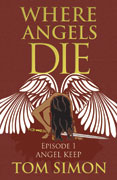
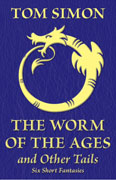
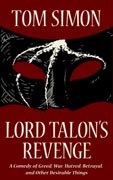

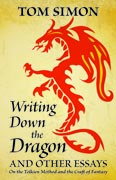
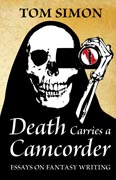
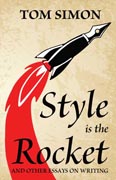
They’re all incredibly distinct!
Dori was a bit of a grumbler but ultimately a good guy who would often be saddled with helping the hobbit.
Oin and Gloin were really good at making fire!
Fili and Kili were younger than the others!
Bifur and Bofur were…were uh….well they were definitely Bombur’s brothers.
Nori and Ori…were the brothers of Dori…who sort of had a thing. So that’s something.
Dwalin…his name rhymed with Balin…so he definitely existed. He’s Balin’s brother.
See! Perfectly distinct three-dimensional characters!
After The Hobbit came out, Tolkien simply blossomed as a writer of interesting characters. Compare the thirteen Dwarves with the nine members of the Fellowship of the Ring. For that matter, compare the flat portrayal of the lead character in the early story of ‘Turambar and the Foalókë’ with the deep and poignant study of the same character in the late ‘Narn i Chîn Húrin’. (We owe Christopher Tolkien a considerable debt for making both the early and late manuscripts available for our free and frank examination.)
I would argue that this problem wasn’t entirely solved by the Lord of the Rings either. Gimli and especially Legolas are very difficult to get a handle on personality-wise.
Granted that everyone else is wonderfully vivid.
Gimli has his moments, but there tends to be so much else happening at those moments that it’s easy to miss. He is a plain speaker and has no patience with obfuscation: ‘The words of this wizard stand on their heads,’ was his comment on one of Saruman’s propaganda speeches. And his reaction to the sight of the Glittering Caves of Aglarond is poignant, and reveals much of the heart’s desire of the Dwarves.
Tolkien and I both agree with you about Legolas. One could almost say that Legolas is too busy being immortal to show much personality in the face of ephemeral little events like the War of the Ring or the end of the Third Age.
Yes, Gimli definitely does not have this issue as much as Legolas does. Still, when you compare Gimli to, as an example, Thorin, you can see the difference. Thorin is vivid, complex, and interesting in a way Gimli is simply not.
I grant that I am currently criticizing one of the greatest works of literature ever written and arguably the greatest English prose work of all time, so it should be noted I obviously consider this at worst an incredibly minor criticism.
I agree. Mind you, Thorin is third or fourth on the bill in The Hobbit (after Bilbo, Gandalf, and possibly Smaug), whereas Gimli ranks well down the list in LOTR. He and Legolas, aside from ‘representing’ Dwarves and Elves in the Fellowship, function essentially as Aragorn’s sidekicks. So one would expect them to be less fleshed out as characters.
I don’t think there’s any dispute that even Legolas is more vividly portrayed than the average Dwarf in The Hobbit.